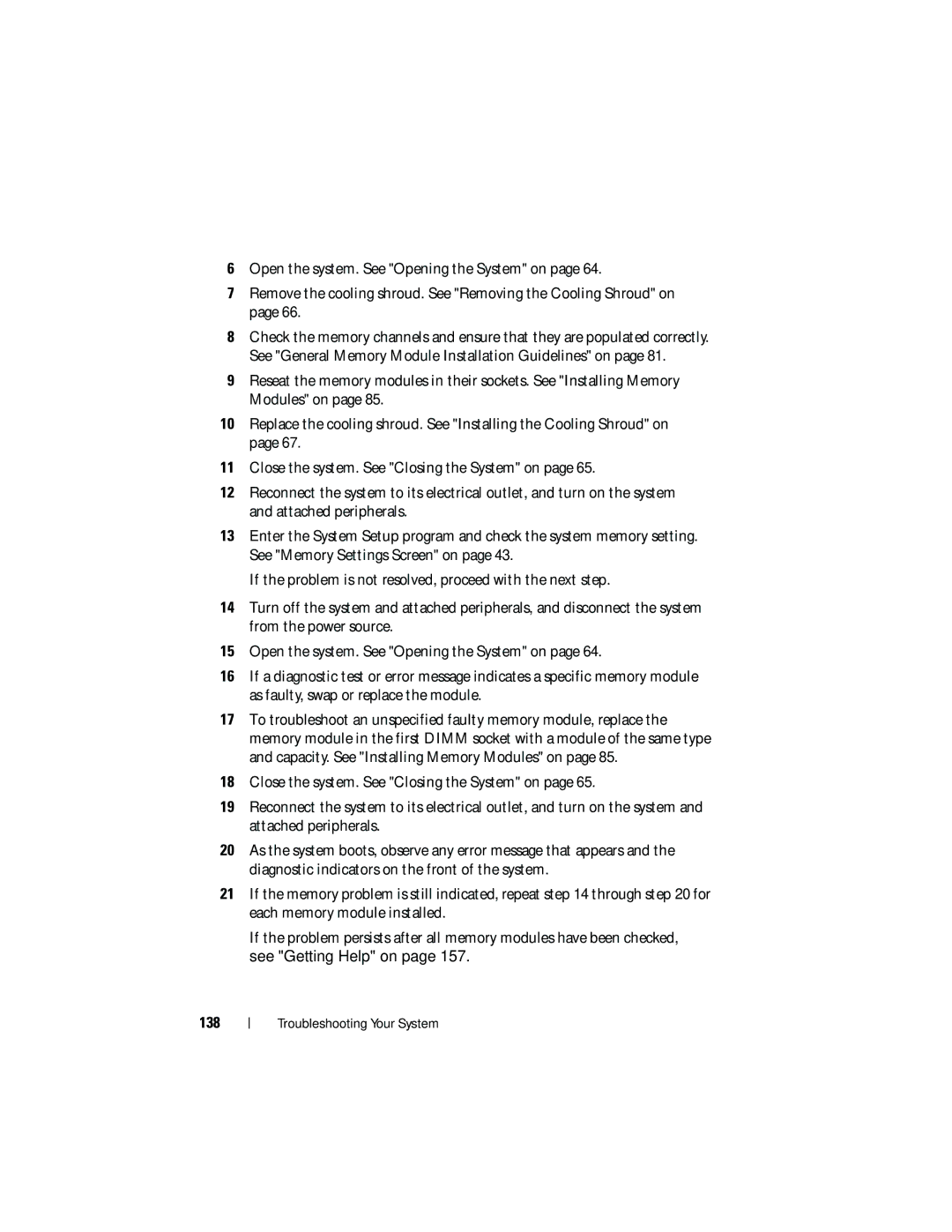6Open the system. See "Opening the System" on page 64.
7Remove the cooling shroud. See "Removing the Cooling Shroud" on page 66.
8Check the memory channels and ensure that they are populated correctly. See "General Memory Module Installation Guidelines" on page 81.
9Reseat the memory modules in their sockets. See "Installing Memory Modules" on page 85.
10Replace the cooling shroud. See "Installing the Cooling Shroud" on page 67.
11Close the system. See "Closing the System" on page 65.
12Reconnect the system to its electrical outlet, and turn on the system and attached peripherals.
13Enter the System Setup program and check the system memory setting. See "Memory Settings Screen" on page 43.
If the problem is not resolved, proceed with the next step.
14Turn off the system and attached peripherals, and disconnect the system from the power source.
15Open the system. See "Opening the System" on page 64.
16If a diagnostic test or error message indicates a specific memory module as faulty, swap or replace the module.
17To troubleshoot an unspecified faulty memory module, replace the memory module in the first DIMM socket with a module of the same type and capacity. See "Installing Memory Modules" on page 85.
18Close the system. See "Closing the System" on page 65.
19Reconnect the system to its electrical outlet, and turn on the system and attached peripherals.
20As the system boots, observe any error message that appears and the diagnostic indicators on the front of the system.
21If the memory problem is still indicated, repeat step 14 through step 20 for each memory module installed.
If the problem persists after all memory modules have been checked, see "Getting Help" on page 157.
138
